When you’re considering buying a new binder for your classroom or office, you might think they’re all one and the same. However, that is not the case. It’s important to know binders come in all sizes. For your binder to do its job well, you’ll need to know how to measure it and how to assess its suitability for your needs. That’s where a great binder sizes chart comes in.
Looking for a quick answer?

What Are Binders Made Of?
Most binders are made of chipboard or cardboard held between two sheets of vinyl or polyethylene. These hard or soft plastic options help protect your documents against wear and water. Binders use a fairly straightforward design to lock pages in place. They are secured in the middle with a metal bracket with a number of metal rings or D shapes, usually three — hence the name “three-ring binder.” This metal spine keeps your binder stiff, so it sits like a hardcover book.
Most binders have the same basic design and materials. However, there is still a range of differences between them, especially in sizing.


Binders with metal rings are often spring-loaded, which makes them easy to pop open. They might use a variety of different securing mechanisms, such as lever arches or other systems.

Lever arches can be an excellent choice if you need to compress a large amount of paper into a small, compact binder. They’re made to snap tightly into place and be especially robust to handle frequent wear. Lever arches make it easy to carry around a large amount of material in a small folder.

Other binders use alternate securing mechanisms. One example is a post binder, which uses metal posts in place of rings. These hold hole-punched paper in place inside your binder.

Punchless binders don’t require holes in paper at all. Rather, they use a simple clamp to secure materials.
A binder is similar to a hardback book. In general, the outer layer is a durable, often waterproof layer, such as plastic. The front and back cover must be stiff enough to support internal weight, but also pliable enough to turn like the cover of a book. There is a hard spine to support the inside metal layer and rings.
Standard Binder Size
The average binder in the United States and Canada is a three-ring binder and fits regular letter-size paper. Letter-size paper is 8.5 inches by 11 inches and has three holes with roughly 4.25 inches between them. Even though this size is the most common in North America, there is a range of sizes.
Binder dimensions are often similar to paper dimensions. You can find binders that are half-size, which, as the name implies, are half the size of a standard binder. Other sizes include legal, ledger, and mini-size, which measures 5.5 inches by 8.5 inches. Mini-size bindersare also called junior binders.
Some binder sizes exist for specialized tasks like organizing finances. Check bindersare a perfect example of this.
Ledger Binders
Ledger binders are made for larger paper. These sizes can get as large as 11 inches by 17 inches. They often also use three rings to keep contents secure. Alternatively, they may use four rings or even more.


Hole Spacing
Binder makers are careful to properly gauge the spacing of holes. This is because the distance between each ring can make a significant difference in the support of the pages and how easy they are to turn.
The distance from the top and bottom holes to the edge of the paper is less important. These holes are typically quite close to the edge of the paper, sometimes within about half an inch. However, it may range anywhere from 0.25 to 0.31 inches in the United States and Canada.
Ring Binder Sizes and Different Kinds of Binders
Most binders are fitted with a series of metal rings to keep pages in place. However, not every binder has the same kind of rings. There are several different kinds of rings that make a difference in how much your binder can hold.
There are also binders that do notuse rings. Post binders, for example, secure papers with metal posts instead of rings. Punchless binders, also called clamp binders, do not use holes at all. Instead, they simply clamp papers inside the binder without hurting them. Disc binders, as the name suggests, use metal discs instead of rings to secure pages.

Round-ring Binders
Round-ring binders,also known as O-ring binders, are the most well-known type of binder. As the name implies, these binders have simple round rings, usually three. 3-ring binder sizes vary, but having three rings is the standard for round-ring binders.
D-ring Binders
D-ring binders are also fairly self-explanatory. These binders have rings that are shaped like the letter D. The key difference is that D-ring binders can hold as much as 25 percent more than round-ring binders. A slant D-ring binder is another type of D-ring binder that has even larger holding capacity. These rings hold more because their unique shape provides a small amount of extra space by angling the rings to the binder covers.
Binder Sizes Chart
You can find a standard binder sizes chart online, but it can be helpful to know how these sizes work. The numbers on a binder size chart refer to the binder’s holding capacity, as well as the size of paper that it supports. This sizing is fairly standard across the United States and Canada, but it may be slightly different in other parts of the world. For example, the standard binder size in Europe is referred to as A4 — an American letter-size.
Binders come in a range of sizes depending on the rings that they use. Round-ring binders come in the following sizes:
- 5 inches (holds 850 pages).
- 4 inches (holds 700 pages).
- 3 inches (holds 550 pages).
- 2 inches (holds 400 pages).
- 1.5 inches (holds 350 pages).
- 1 inch (holds 200 pages).
- ⅝ inches (holds 115 pages).
D-ring or slant D-ring binders come in the following sizes:
- 5 inches (D-ring holds 950 pages; slant D-ring holds 1,050 pages).
- 4 inches (D-ring holds 700 pages; slant D-ring holds 825 pages).
- 3 inches (D-ring holds 600 pages; slant D-ring holds 650 pages).
- 2 inches (D-ring holds 480 pages; slant D-ring holds 500 pages).
- 1.5 inches (D-ring holds 350 pages; slant D-ring holds 390 pages).
- 1 inch (D-ring holds 220 pages; slant D-ring holds 235 pages).

How to Measure Binder Size
Most people don’t realize the average binder is notmeasured based on the length or width of the spine. This means people commonly choose the wrong binder when shopping in the store. They might think the binder was mislabeled or that they chose the wrong one off the shelf. However, they likely do not know the correct way to measure a binder.
With this in mind, what is the best way to measure a binder? The secret comes down to the rings.
Binders are not measured by the width of their spine. Instead, they are measured by the diameter of the rings. If you are trying to choose the right binder, measure the binder ring size to find the proper holding capacity. This will give you a more accurate picture of how much your binder will hold.

Binder Types and Accessories
When you’re comparing binder types, you’ll notice there are many variations on the standard, no-frills binder. These extras make it much easier to customize your binder to your needs.
Binder sizes and types vary on several different factors. For standard three-ring binders, you will need to consider holding capacity, paper size, ring type, and more. You may also need to think about the hardness or softness of the cover and the type of ring support you want.
You can also find binders with every accessory you could possibly need to organize and work. Binder accessories include reinforcement labels, mesh pockets for pens, sheet protectors, interior pockets, and more.

How to Choose the Right Binder

Choosing the right binder largely depends on your preferences and your intended use. One thing to consider is the holding capacity you need. If you intend to store a large amount of work, consider choosing a D-ring or slant D-ring binder. This will give you more storage capacity than the average O-ring binder.

Also, consider the dimensions of the binder. Will it fit a standard sheet of paper? Will you be storing specialty paper? Special binder sizes are available as well, so if you need something bigger than the average 8-by-11 binder cover, take a look online.

You should also consider the type of cover that will be best for you. Many binders come with a traditional hardcover that consists of plastic sheeting over a piece of chipboard. This offers the ultimate protection for anything you need to store inside. However, some people prefer soft-cover binders for their compactness and flexibility.

Many binders also come with special features for additional storage or special use. Whether you want these completely depends on you and your needs! You can find things such as interior pockets, page protectors, pencil holders, and other special characteristics. You can also find binders that have special storage capacity outfitted with zippers, organized tabs, and more.

You may also want to consider the opening mechanism on your binder. Some are spring-loaded for ultimate ease of access. Others use lever arches to make a large amount of material highly compact and easy to carry. Your choice largely depends on what you will be storing.
So what now?
When it comes to choosing the best binder for your needs, you will need to consider many different things. Maybe you are storing a lot of documents or notes for a class or office project and need a large storage capacity. Maybe you have specialty-size paper that does not fit in a traditional binder. Whatever your needs, you need the best to keep your desk — and your mind — organized. An accurate binder sizes chart can help with that.
Blue Summit Supplies offers a range of quality bindersin all shapes and sizes. No matter what your needs, you can rely on finding a binder that checks all your boxes.To learn more about office culture and office supply must-haves, check out our blog. If you have any questions, send Larry a message!
 For more informative articles about office supplies, subscribe to our email newsletter!
For more informative articles about office supplies, subscribe to our email newsletter!
Never fear, you won't begin receiving daily sales emails that belong in a spam folder. Instead, we promise a fun weekly roundup of our latest blog posts and great finds from across the web. And if you lose interest, it's always easy to unsubscribe with a single click.




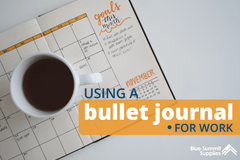


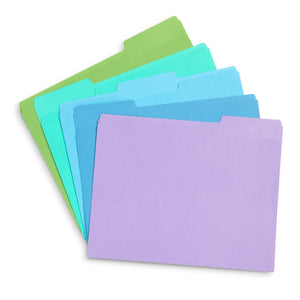
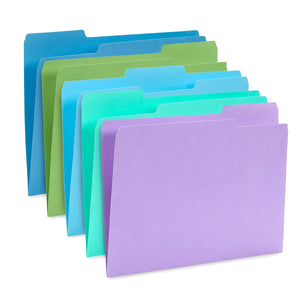
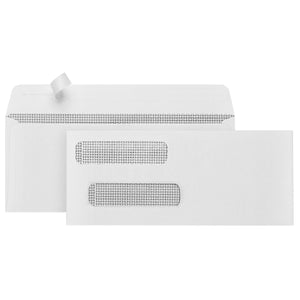
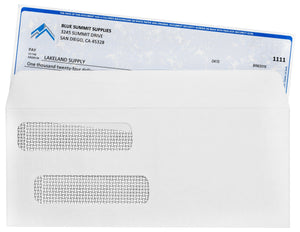
12 comments
Lauren Franke
Hi Bob, thanks for your question! Yes, buy pages we mean sheets of paper.
Bob
Hi! This information keeps referring to pages and not sheets of paper. My work is all printed double sided therefore having two pages on one sheet of paper. So, when you refer to pages do you mean sheets of paper? Thanks!
Lauren
Hi Tina,
Yes, this may be a custom item that you’ll need to have made. There are larger, 2-ring binders that are sold at Staples, but I’m unsure of what the distance of the rings are. I’m sorry we can’t be of more help!
Tina M
Looking for the same answer for Linda’s comment here please!
Linda C.
October 12, 2021 at 09:09am
Any advice for finding a 2-rings binder with non-typical measurements?
I purchased a school textbook (without binding). Sheet size is 7.5" (width) by 9" (height); textbook thickness is 1.75". The 2 holes punches are spaced apart by 4.25".
I can’t find an appropriate fitting binder anywhere. Would this be custom-sized only?
Lauren
Hi Barbara! A more common size would be 5.5×8.5 inch mini sheet protectors, which would fit any standard mini binder.
Barbara Hartley
I once wrote cookbooks for my children. Now my grandchildren want them too. I used 6 1/2″ × 9″ paper and protective sleeves. And I used commonly available 3-ring binders. Are these supplies still available?
Linda C.
Any advice for finding a 2-rings binder with non-typical measurements?
I purchased a school textbook (without binding). Sheet size is 7.5" (width) by 9" (height); textbook thickness is 1.75". The 2 holes punches are spaced apart by 4.25".
I can’t find an appropriate fitting binder anywhere. Would this be custom-sized only?
Justine
Hi Laurie,
We carry mini sheet protectors and standard size. Please use this link: https://www.bluesummitsupplies.com/search?q=sheet%20protectors%20*
Thanks,
Justine
Laurie
Do you carry junior binder sheet protectors?
Maria
I just purchased a 12 × 12 D 3 ring binder which I will use as a scrapbook, I’m going to need to punch holes in the paper I use, are the rings the same distance apart as an 8 1/2 by 11 binder? Or will I have a problem with an average 3 whole punch which I’m looking to buy? Odd question I know,
Grace
Hi Donald, I’ve sent you an email with a few links! I hope they’re helpful. Best, Grace
Donald Miller
I think Europe is the only place I can find a 12×14 inch 4 ring binder and display pages for my large stamp sheets. Can’t seem to find it here. I’ve seen a couple pages but no one has anything. Thx. DM